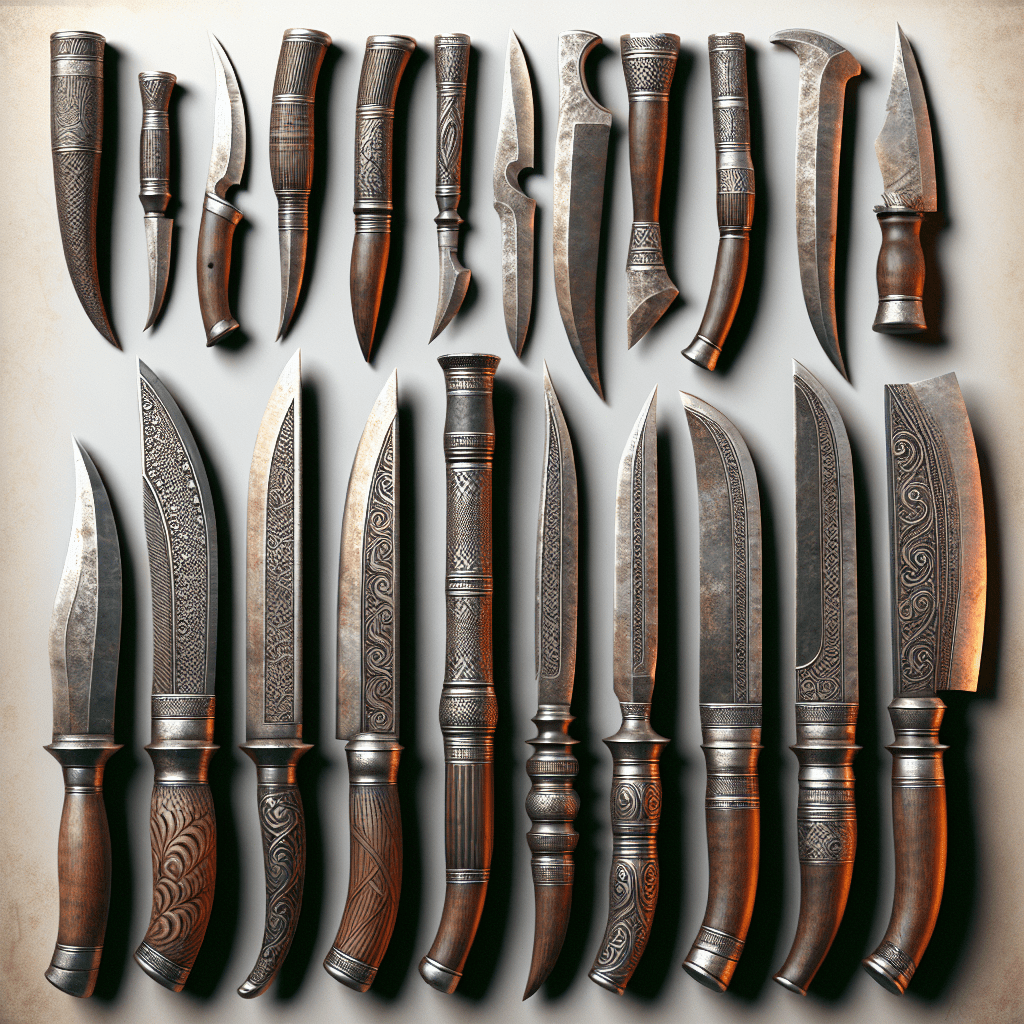Indian knives have a rich history and hold significant cultural importance in Indian society. This blog post aims to explore the evolution, types, techniques, and cultural significance of Indian knives. By delving into their historical significance and traditional uses, we can better understand the role knives have played in Indian culture and how they continue to be valued in modern times.
Historical Significance of Indian Knives
The evolution of knives in India can be traced back to ancient times. Various empires and dynasties had a profound influence on knife-making techniques, resulting in a diverse range of styles and designs. Knives were traditionally used in various aspects of Indian society, from everyday tasks to warfare and ceremonial purposes.
Types of Indian Knives
Kukri Knife
The Kukri knife has its origins in Nepal but gained popularity in India due to its versatility and effectiveness. It features a distinctive curved blade and is known for its use in both daily tasks and as a weapon. The Kukri knife holds cultural significance and is often associated with bravery and honor.
Pesh-kabz
The Pesh-kabz is a dagger-like knife that originated in Persia but was widely adopted and adapted in India. It has a long, straight blade with a reinforced tip, making it ideal for piercing armor. The Pesh-kabz played a crucial role in Indian warfare and continues to hold cultural and ceremonial importance.
Bichuwa
The Bichuwa is a unique knife with a curved blade and a distinctive hilt design. It originated in Rajasthan and is often associated with Rajput warriors. The Bichuwa holds symbolic meaning and is traditionally used for self-defense and as a status symbol. Modern variations of the Bichuwa have adapted its design for contemporary purposes.
Katar
The Katar is a punch dagger known for its H-shaped handle and parallel blade. It has a rich history in India, especially in martial arts and self-defense. The Katar is revered for its cultural symbolism and intricate decorative elements. It continues to be cherished as a piece of traditional Indian craftsmanship.
Chaku
The Chaku is a versatile and practical knife that comes in various regional styles in India. It is widely used in daily life for tasks such as food preparation and cutting materials. The Chaku’s importance in Indian cuisine and its role in daily life make it an essential tool for many households.
Traditional Techniques and Materials Used
Forging and Blade Making
The process of forging Indian knives involves traditional methods that have been passed down through generations. Indian blacksmiths possess exceptional skills in shaping and tempering blades. The choice of materials for blades varies depending on the intended use, with high carbon steel being a commonly used material.
Handle Making
Traditional handle materials for Indian knives include wood, bone, and ivory. These materials are carefully shaped and carved to create ergonomic handles that provide a secure grip. Ornamentation and decorative elements such as engravings and gemstones are often added to enhance the aesthetic appeal of the handles.
Sheath and Scabbard
Indian knives are typically accompanied by sheaths or scabbards made from materials such as leather and wood. Craftsmen often embellish these sheaths with intricate designs and patterns. The design of sheaths may vary depending on the region and the specific knife type, but functionality and protection of the blade are always prioritized.
Cultural and Symbolic Significance
Indian knives hold great cultural and symbolic significance. They are often used in rituals and traditions, symbolizing strength, bravery, and protection. Knives play an integral role in Indian festivals and ceremonies, where they are used for various purposes, including sacred offerings and rituals.
Indian Knives in Modern Times
The knife-making industry in India has evolved to meet the demands of modern times. Indian knives have gained global recognition for their craftsmanship and unique designs. Collecting and preserving Indian knives has become a way to honor and appreciate their cultural and historical value as artifacts.
Conclusion
Indian knives have a diverse range of types, each with its own historical significance and cultural importance. Their craftsmanship and symbolism have endured throughout history, making them an essential part of Indian culture. The legacy of Indian knife-making continues to thrive, showcasing the skill and artistry of Indian craftsmen.

